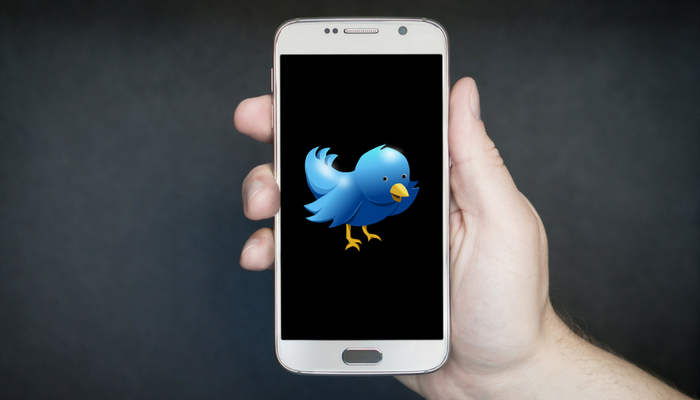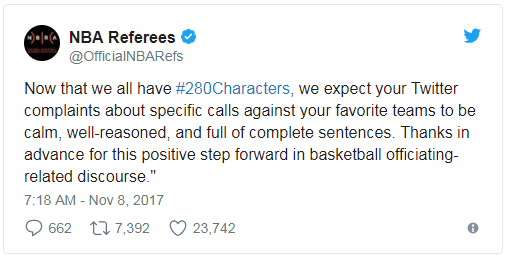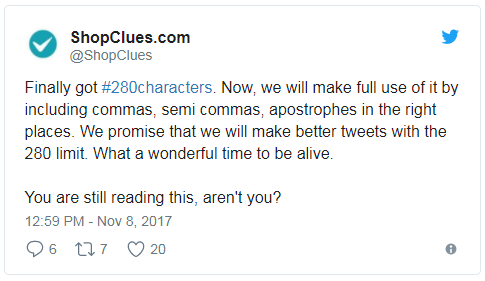You must have heard that X has doubled its character limit from 140 to 280. For those who have been tweeting for years, the reactions have been varied.
On September 27, 2017, Twitter CEO Jack Dorsey himself posted a noticeably longer than usual post announcing the change:
“This is a small change, but a big move for us. 140 was an arbitrary choice based on the 160 character SMS limit. Proud of how thoughtful the team has been in solving a real problem people have when trying to Tweet. And at the same time maintaining our brevity, speed, and essence!”
And according to Twitter product manager Aliza Rosen and senior software engineer Ikuhiro Ihara on the Twitter blog, “We want every person around the world to easily express themselves on Twitter, so we’re doing something new: we’re going to try out a longer limit, 280 characters, in languages impacted by cramming (which is all except Japanese, Chinese, and Korean).”
“We understand since many of you have been Tweeting for years, there may be an emotional attachment to 140 characters – we felt it, too. But we tried this, saw the power of what it will do, and fell in love with this new, still brief, constraint. We are excited to share this today, and we will keep you posted about what we see and what comes next.”
For those who have become accustomed to the 140-character limit, it doesn’t make much of difference as cramming their thoughts into 140 characters or less is an art they’ve mastered. In fact, many people feel challenged by keeping their thoughts concise, proving that quality content, no matter how short, can be compelling.
However, to many people, the announcement that Twitter’s longer limit of 280 came as a reason to celebrate. Trying to limit your Tweets to 140 characters can be painful particularly when you have so much to say. Avid Tweeters eager to express themselves will tell you how often they’ve had to edit their Tweets just to fit. And when you have to shorten the text just to stay within limit, something essential to your message can get lost. This explains why we’ve all seen how some people determined to convey one long thought end up creating a series of Tweets.
Twitter’s Move to More Characters and Public Reaction
According to Twitter, the change was largely due to the realization that people using different languages posted differently. Someone posting in English or Spanish will feel limited by 140 characters while languages such Japanese will not. The goal for Twitter is to satisfy their users no matter what language they use, making Twitter a truly inclusive platform for its worldwide users.
“…in languages like Japanese, Korean, and Chinese you can convey about double the amount of information in one character as you can in many other languages, like English, Spanish, Portuguese, or French.”
Twitter’s Aliza Rosen goes on to say:
“Historically, 9% of Tweets in English hit the character limit. This reflects the challenge of fitting a thought into a Tweet, often resulting in lots of time spent editing and even at times abandoning Tweets before sending. With the expanded character count, this problem was massively reduced – that number dropped to only 1% of Tweets running up against the limit. Since we saw Tweets hit the character limit less often, we believe people spent less time editing their Tweets in the composer. This shows that more space makes it easier for people to fit thoughts in a Tweet, so they could say what they want to say, and send Tweets faster than before.”
For the most part, the announcement of X’s 280 character limit has been met with positivity with some people getting creative with all the extra space. Some brands were quick to express their amusement in humorous ways:
And while ShopClues Post is meant to be funny, it does raise some valid points. X’s 140 characters didn’t just limit people’s thoughts to a degree but also had them skipping proper punctuation just to make everything fit. To many marketers, particularly content creators, this has been a cause for frustration. Improper grammar on any marketing copy is enough to make some people cringe. And just think of how people feel when they’re subjected to reading that on top of abbreviations or text speak.
The Impact That a 280 Character Has on Your Business
For marketers, the 140-character limit has meant having to work around an even smaller number of characters because they have to consider hashtags for marketing campaigns takes up from the 140 character “budget”. And let’s not forget how adding a link to any post already takes up 23 characters from that limit regardless of how long the URL itself is. So if you are creating a post promoting a launch for your product and want to add a link to your e-commerce store or blog, you don’t just have a 140-character limit but have to pack all your thoughts in 117 characters or less.
However, some marketers argue that more characters may not be a necessary thing. Digital marketer and strategist Ross Simmons reacts by saying, “While the 280 character limit opens up the opportunity to write MORE on Twitter, it doesn’t mean we always should. The brands who have been successful on Twitter weren’t successful because they wrote a lot, they were successful because they delivered timely responses, valuable content & invested in quality storytelling. That hasn’t changed.”
Perhaps, having the option to stick to 140 characters or push the new 280 limit is an excellent opportunity for marketers to conduct A/B testing to identify what their audiences respond to best.
With social media analytical tools such as Fedica, you can analyze your X activity. Are you getting more engagement with your longer posts vs. the short ones? And because there’s an alert feature on this analytics platform, you can define and set an alert on any topic, word, hashtags or a combination of. Furthermore, you can then monitor sentiments, allowing you to analyze the attitudes, emotions, and opinions behind your brand’s Twitter mentions.
Time will tell how the new character count will affect publishing and engagement. For now, the possibilities are definitely worth exploring.




